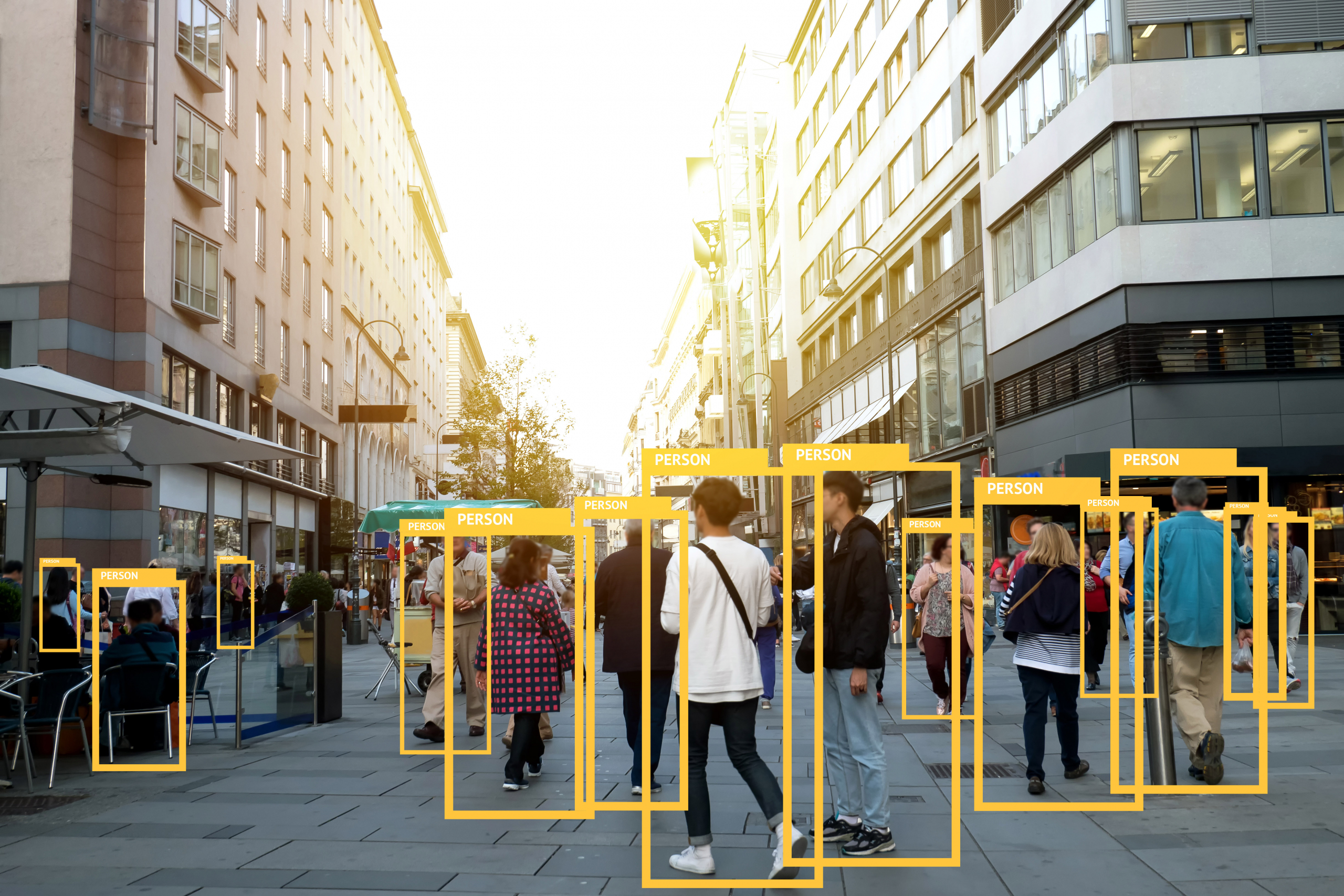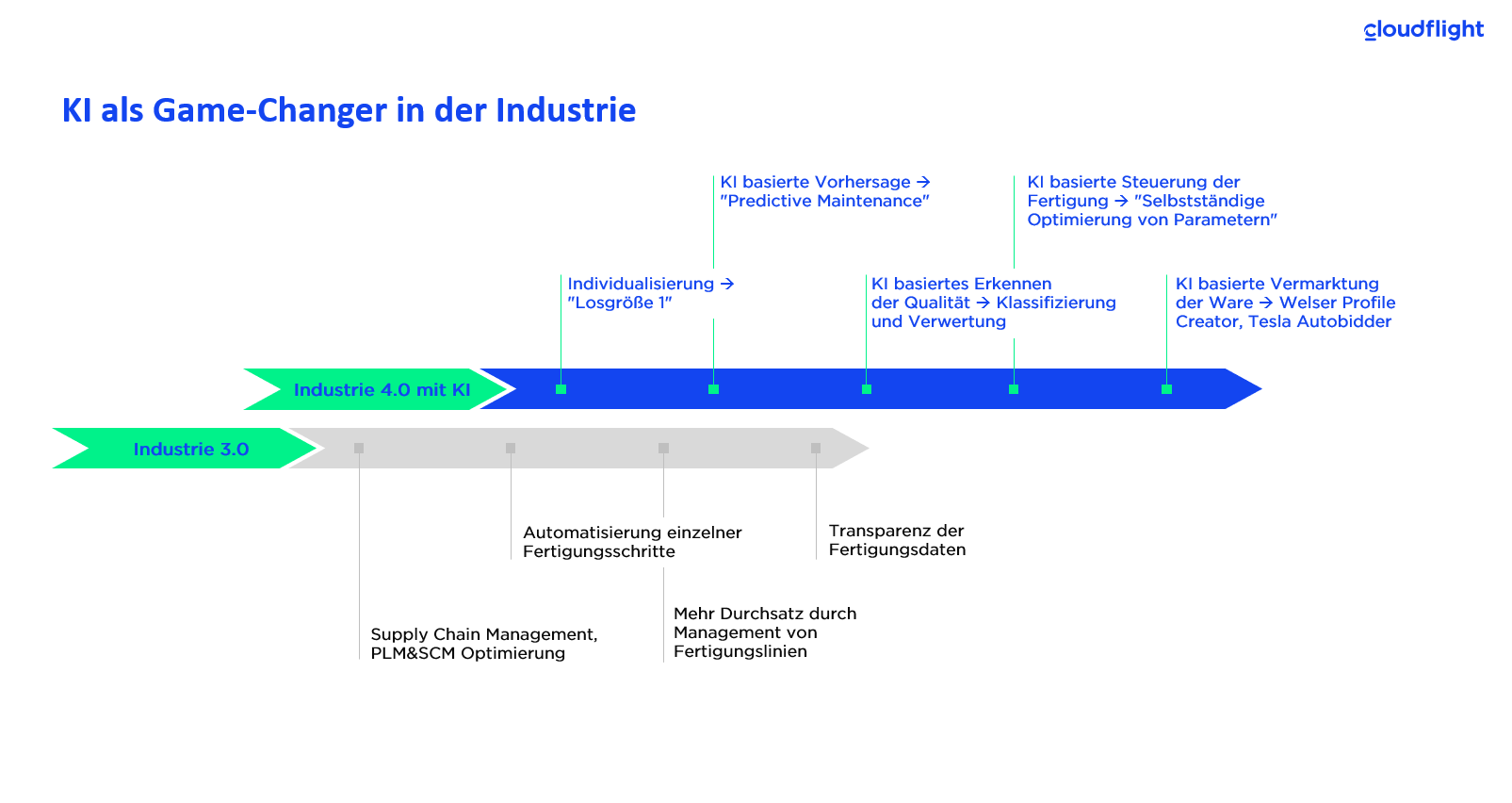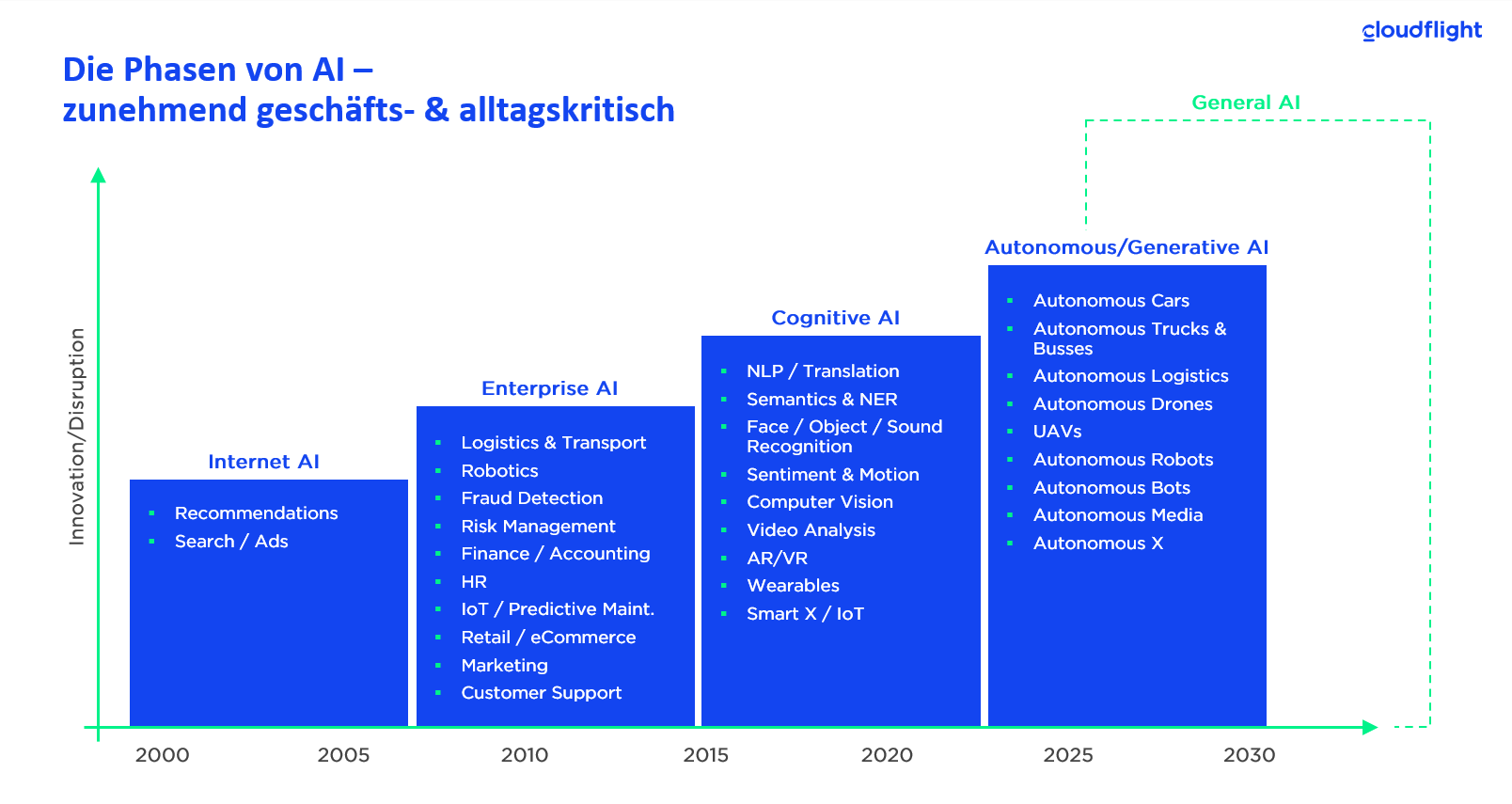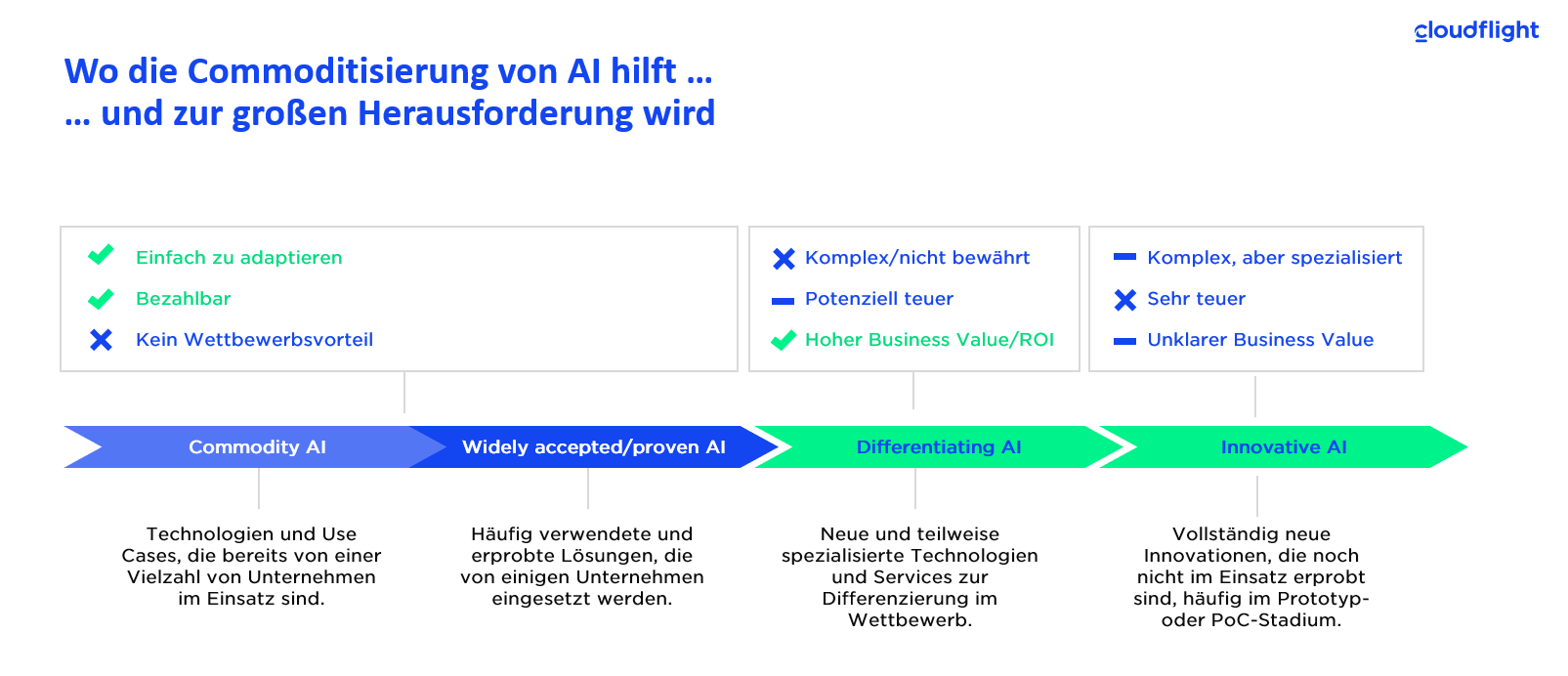AI as a game changer in industry – forward-looking, autonomous, strategic
New, intelligent AI applications are more in demand than ever for digital business models and processes in German companies. Text, pattern and speech recognition of data, as well as image & video recognition, among others, are playing an increasingly important role. Especially the evaluation and targeted use of data has received an enormous boost in recent years due to the factors Big Data and Machine Learning. AI architectures should now be consistently designed for completely different data classifications and analyses (historical, real time, predictive) and take the following aspects into account:
- Processing in distributed cloud-based environments (link: https://www.cloudflight.io/de/service/cloud-native-development-services/)
- Focus on predictive results and representations
- High volume (petabyte range) and variety of data (multiple sources, unstructured data)
- New data sources: Geo, context, web, sensors/actuators,
- New results and predictions potentially lead to high business value
The variety of possible technological uses for AI results in a very broad spectrum of use cases and areas of application. The footprint of industrial companies in particular in the context of AI often covers not just one, but several use cases. However, a trend in the areas of application can already be identified. As an example, the AI activities of many companies focus primarily on the service and production area (AI-based predictions ⇾ predictive maintenance), as well as the measurement of all process activities (AI-based control of production ⇾ autonomous optimization of parameters & AI-based recognition of quality).
In this sense, these two areas – digital service processes and digital production processes – are among the most heavily pursued use cases in the industry cross-section for AI today. Many of today’s PoCs and projected solutions have already made it into productive use. The primary aim is to increase the degree of autonomy in manufacturing and reduce maintenance and service costs in downstream processes, ultimately increasing profitability. In addition, AI systems are also able to control the marketing of goods. This is the case, for example, with the Welser Profile Creator, a platform that enables customers to create a desired product themselves in a short time without having any significant CAD knowledge themselves.
AI evolution – from commodity to individual
If you take a look at the development in the field of artificial intelligence, you will see that there are already a large number of open source frameworks such as Spark, TensorFlow, PyTorch and many more. This development makes it increasingly easy to try out and implement state-of-the-art AI projects. This also raises the question of whether AI will now become the default standard for all IT applications or a commodity, and whether all AI applications will be available off the shelf in the future.
If we now take a closer look at the development, this may already be the case today in certain areas.
When it comes to Internet AI, such as recommendations and search ads from the early 2000s, or enterprise AI, such as fraud detection or logistics and transport applications, it is easy to fall back on standards.
As far as the use of hyperscalers is concerned, there are also a large number of applications that can be deployed relatively quickly for individual application areas.
However, when it comes to the implementation of several complex Natural Language Processing (NLP), Computer Vision, Data Science and Deep Learning projects, especially in the context of Cognitive AI & Autonomous AI it comes down to one essential factor that mostly does not exist in a standardized way: data!
In the real world, data often gets lost, and data is usually anything but clean or does not fit the intended data model. A large part of the work in an AI project is to formally specify the problem, then “mine” and clean the data for it, and finally, make useful evaluations of the results.
In addition, integrating AI components is very complex once they have been written or trained. Formalizing problems and preparing AI algorithms, as well as integrating the results into workflows within an organization, are the most important and complex points of an AI project.
Going live with the AI model is the last and least complicated step. Yet standard technology is only half the battle in such projects. Most importantly, successful AI projects require experienced experts who have the knowledge of how to apply the technology to make the most of the available data.
Where standardization of AI helps..
Standards thus make sense where technologies and use cases are already in use by a large number of companies and are frequently used and tested as solutions. It is then that commoditization of AI can really help, although AI is easy to adapt and it is affordable. Nevertheless, it must be known that no major competitive advantage can be achieved.
Standards, yes – but how do you differentiate yourself?
It is precisely when new and partially specialized technologies and services appear, or completely new innovations that have not yet been tested in use (often in the prototype or PoC stage), that these can lead to differentiation in competition. What this means for industrial companies:
- AI projects are becoming increasingly complex and find particular importance at strategic, operational and technical levels
- AI projects must be implemented programmatically, but in an agile and flexible manner
- Industrial companies will adapt and use standards
- At the same time, they will specifically look for competitive advantages at the process and product level
- Consortia & “cartels” will emerge to jointly drive AI projects and platforms forward
- AI projects will be implemented in “co-creation mode” to ensure technical success and promote competence building
- AI will finally become part of the digital technology stack of industrial companies




